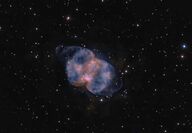Sorted by date Results 1 - 3 of 3

With the arrival of August, the constellations of mid-summer are on full display. The group of stars we are highlighting this month has a feature that makes it truly unique among the modern constellations. Serpens, the Serpent, consists of two non-contiguous parts, known as Serpens Caput (the serpent’s head) and Serpens Cauda (its tail). To understand why the serpent is separated into two parts in the sky, it is necessary to introduce another celestial figure, namely O... Full story

This month’s featured constellation is Cancer the Crab. Being the dimmest member of the zodiac, it is not the easiest asterism to make out. (The zodiac is a strip of sky where the sun, moon, and all the planets of our solar system are always found.) Cancer is bordered by Gemini to the west and Leo to the east, and lies just above the head of Hydra, the Water Serpent. It’s positioned about 65 degrees in altitude from the southern horizon around 9 p.m. during March. Obs... Full story

During late fall and early winter, observers in the northern hemisphere have an opportunity to see the 24th largest constellation by area: Perseus the Hero. To locate it, draw an imaginary line from the circumpolar constellation of Cassiopeia (the “W”) to the zodiacal stellar grouping known as Taurus. Except for the two end points, the entire length of this line resides within Perseus. Look for it overhead during the evening hours this month. Perseus contains eight stars wit... Full story